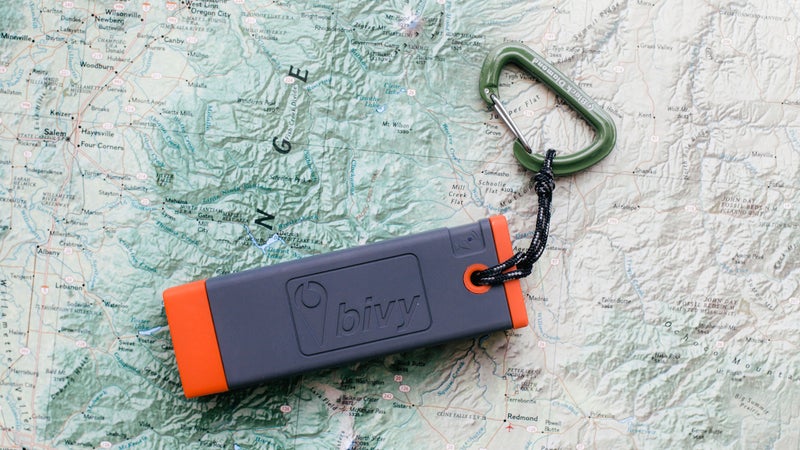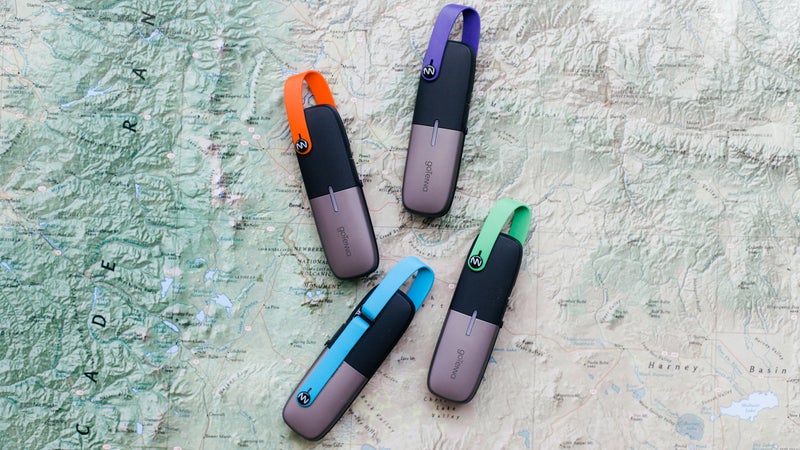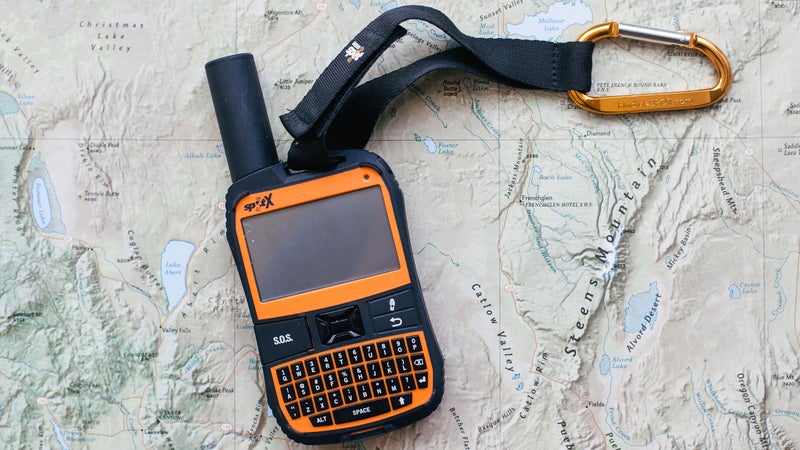Backcountry communicators are, at their best, lifesaving devices that allow you to check in with friends and family back home and reach emergency services in a pinch, even when you’re far off the grid. At their worst, they’re finicky and frustrating to operate and little more than added ounces in your pack.
The Test
To find which do their jobs with the least hassle, I enlisted Erik Sol, chairman of , and his club members to help put three of the latest communicators through the wringer. Over a month, they took the devices backpacking on the Rogue River Trail, backcountry skiing in the Siskiyous and on Mount Shasta, as well as day hiking near the university campus. (Disclaimer: we tried to include a Garmin inReach in this test because of how well-rated and widely used they are, but the company didn’t have any units available.)
The Results
Winner: Bivystick ($360)

User-Friendliness: 4/5
Effectiveness: 5/5
Portability: 4/5
How It Works: Bivystick is a six-by-two-by-one-inch unit that connects with your Android or iOS phone via Bluetooth. Through the accompanying app, you can text, send out an SOS to emergency services, or give locations through social media. It connects your phone to , which affords connectivity just about anywhere in the world. And there are all kinds of maps and trip reports on the app that you can download before heading out. Unlike other communicators that have contracts and startup fees, the Bivystick runs off credits (like old burner cell phones you prepurchased minutes for). A base plan of $18 gets you connection to the satellite network and ten credits, with a single one being good for sending or receiving one text, sharing your location once, getting a weather report, or tracking your route for an hour.
The Takeaway: Everything about was remarkably easy to use. The app was intuitive and allowed the students to utilize their smartphones’ full keyboards to write 160-character texts. And the ability to download maps online before heading into the backcountry, track your route, and get updates on the weather were nice perks. Connectivity was stellar: testers had no problems sending or receiving messages, even at the bottom of the Rogue River canyon. But as with all devices that use Bluetooth, the Bivystick was a serious suck on phone batteries—one lost a third of its charge in five hours. (However, the unit’s 5,200-mAh battery can last up to 400 hours and has enough juice to charge your phone twice via the USB port. And it’ll stop charging once the Bivystick reaches 20 percent battery to avoid sapping the whole thing.) Also, the power button is hidden behind a plastic flap so the device doesn’t randomly turn on and off in your pack, but it was a struggle to open, to the point where the group members worried it’d break. This felt like a small gripe, though, considering the Bivystick came through in the closest thing we had to an emergency during testing. “On the final night of our trip down the Rogue River Trail, one of the students had a minor injury that slowed us down and required a deviation from plan A,” one tester says. “I was able to efficiently communicate our change in plans with multiple contacts and coordinate an alternate pickup time for the shuttle.”
2. GoTenna Mesh ($179)

User-Friendliness: 4/5
Effectiveness: 2/5
Portability: 5/5
How It Works: GoTenna allows you to use your Android or iOS phone off the grid through long-wave radio signals, pairing with Bluetooth. You can text and send GPS coordinates but only with other GoTenna users (whereas the Bivystick can communicate directly with any other phone). The Mesh uses other GoTennas in the area to help relay your message, pinging it through them kind of like a game of telephone—none of the intermediaries can see the message or change it—for up to four miles. Downloadable maps are available, too. There are no monthly fees to use GoTenna Mesh, just the up-front cost of the device.
The Takeaway: Sol and his team paired with their cell phones instead of using radios while out in the field. They noted that the pocketknife-size units were the easiest to transport and that the Mesh’s smartphone app was easy to navigate, similar to WhatsApp. While it was an easy and effective tool to allow Sol and his team to communicate when in relatively close range and within their team (everyone had GoTenna Mesh units), they didn’t like that they couldn’t communicate outside the network. This was our biggest beef with the GoTenna: even though it was great for messaging within the group, it can only send a public SOS to other Mesh users. Also, testers found that the Mesh had trouble getting texts through when they were in thick woods, as well as when they dropped below ridgelines in the Siskiyous—essentially the same problems you encounter while communicating via radios. Radios, however, are big and clunky, and most people bring a phone anyway. In the end, testers wouldn’t want to depend solely on the Mesh for communicating in the backcountry, but they did think it was good for groups at a ski area or hiking on a trail and wanting to save money. The Mesh is the most affordable on this list, and that $179 is for two units.
3. Spot X ($250)

User-Friendliness: 1/5
Effectiveness: 3/5
Portability: 4/5
How It Works: Unlike the other two in this test, the Spot X is its own self-contained unit, not needing to piggyback off phones via Bluetooth. It uses to receive and send messages directly with other phones. It can also track your route, blast out your location or text updates via social media, and program waypoints, plus it offers a direct line to emergency services for SOS calls. It has a full keyboard and a cursor button for navigating the screen.
The Takeaway: Testers appreciated that didn’t rely on Bluetooth and had its own on keyboard. The fact that you don’t need to keep a phone charged or juggle both your phone and another unit while in the backcountry were all big bonuses. The students thought the keyboard would make sending texts extremely fast and easy. In the end, though, the keys on the buttons proved too small to type with gloves on and would be tough to use in heavy rain, snow, or finger-freezing subzero winds. They also found the cursor button to be a little clunky. But this communicator took the biggest ding after a firmware update shut the entire unit down, making it unusable for a portion of the test. ���ϳԹ��� of that, the Spot X was decent.


